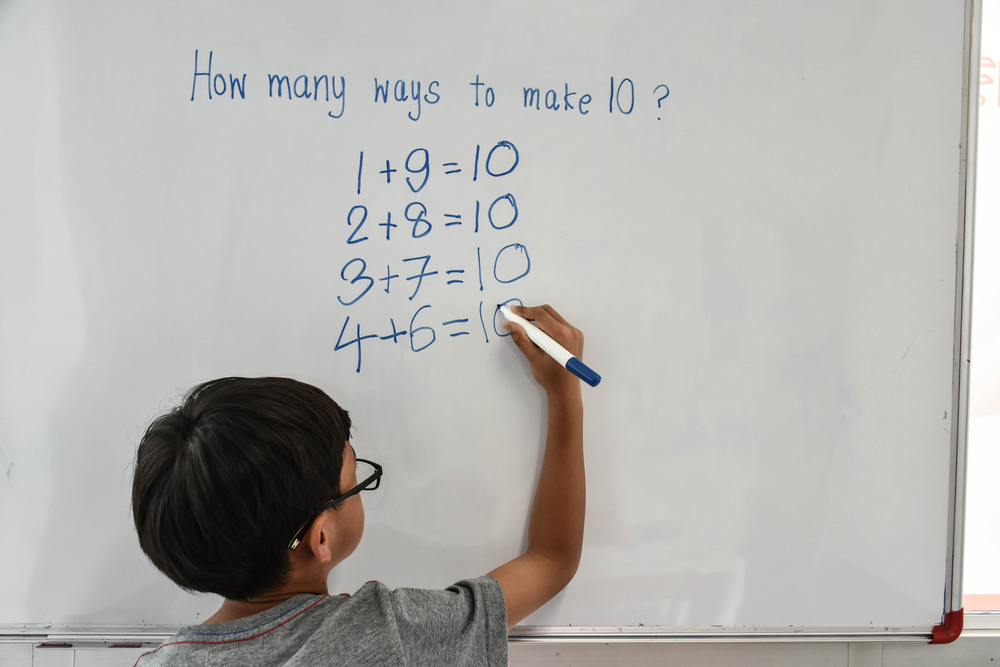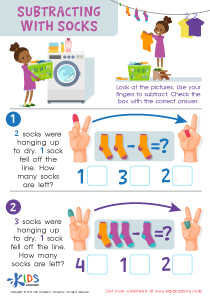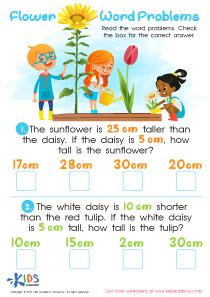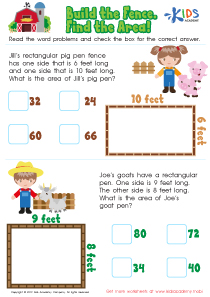Money Word Problems Worksheets for Ages 3-7
3 filtered results
-
From - To
Discover our engaging Money Word Problems Worksheets designed specifically for children ages 3-7! These carefully crafted worksheets help young learners develop essential math skills through fun, relatable scenarios involving money. Our interactive problems encourage critical thinking and problem-solving, making math enjoyable and accessible. Ideal for both classroom and home education, these worksheets cover a range of concepts, including counting coins, understanding value, and basic addition. With colorful illustrations and age-appropriate language, your child will build confidence in their math abilities while mastering financial literacy. Download and print today to support your child's learning journey in a delightful and effective way!
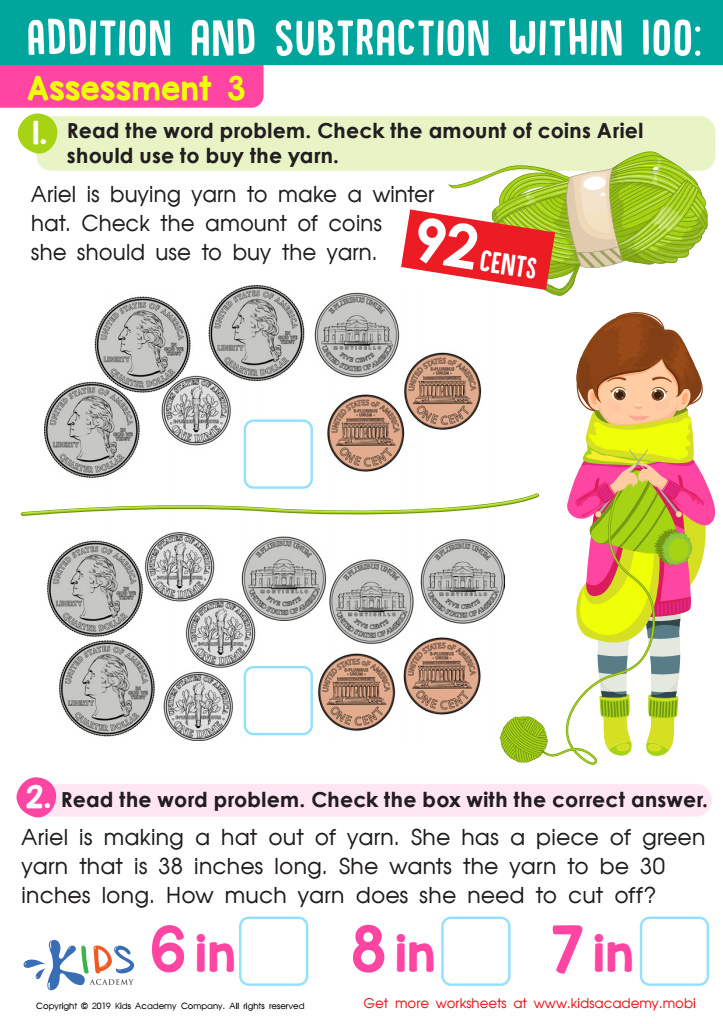

Assessment 3 Math Worksheet
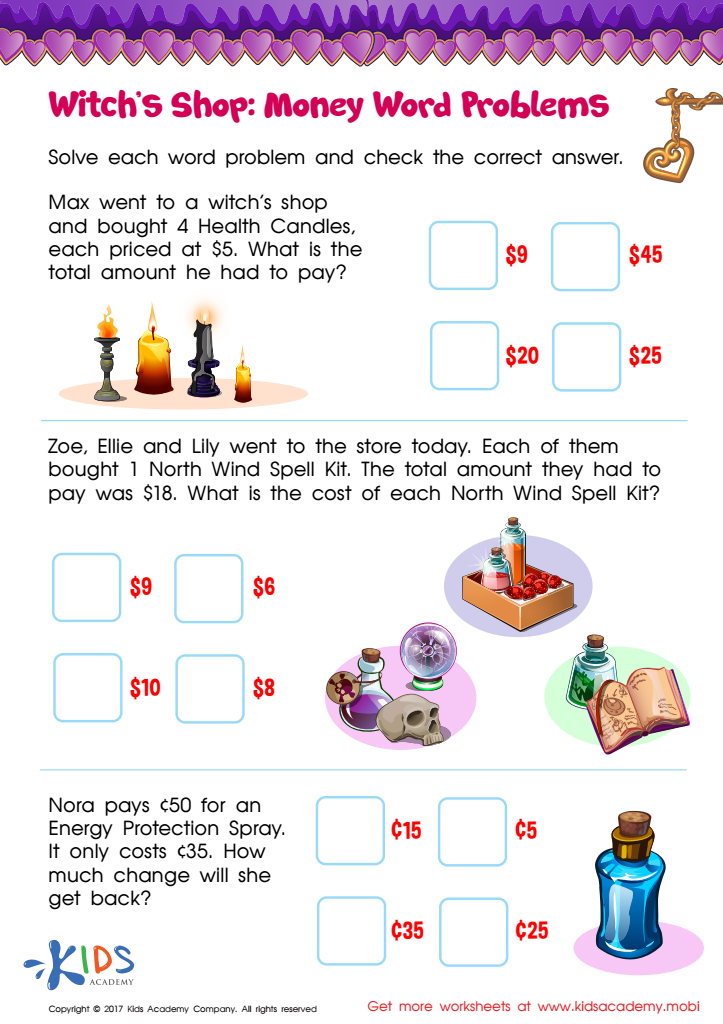

Money Word Problems Printable
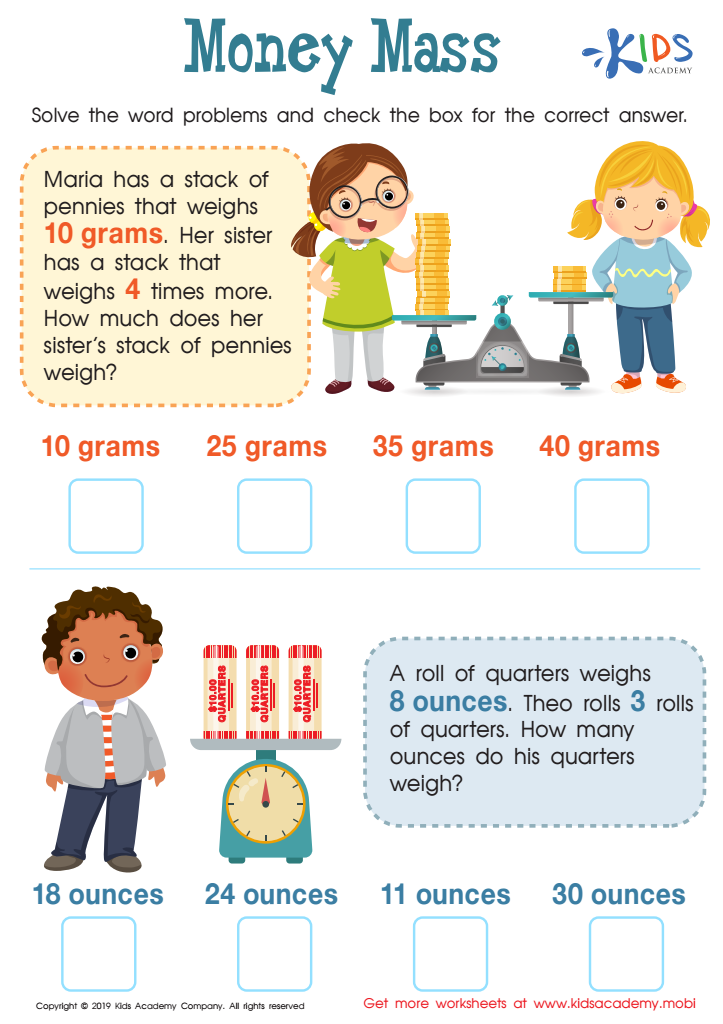

Money Mass Worksheet
Parents and teachers should care about money word problems for children aged 3-7 because they provide a crucial foundation for mathematical understanding and real-life skills. Engaging with money concepts helps young learners develop essential numeracy skills such as addition, subtraction, and problem-solving. By incorporating money word problems into their learning, children can practice these skills in context, making abstract math concepts more tangible and relevant.
Moreover, money word problems introduce important life skills, such as budgeting and financial literacy. Early exposure to these concepts fosters an understanding of value, currency, and basic transactions, which are fundamental in adulthood. It allows children to grasp the concept of making choices based on available resources, enhancing their decision-making skills.
Additionally, tackling money word problems encourages critical thinking and the ability to analyze a situation. Children learn how to interpret questions, breakdown information, and think systematically, which are skills applicable far beyond math.
Finally, these activities can foster communication skills, as discussing money problems with peers or caregivers encourages dialogue and expression of ideas. By nurturing these skills early on, parents and teachers equip children with tools that support both academic growth and everyday decision-making throughout their lives.
 Assign to My Students
Assign to My Students






